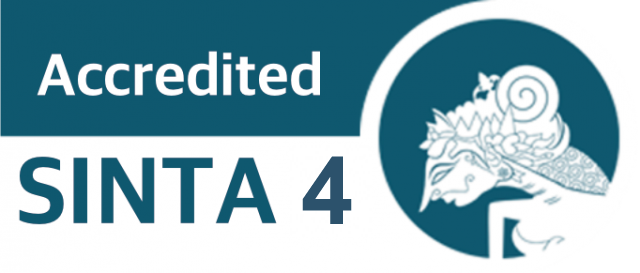Implementation of PBL-flipped classroom learning model to improve the learning outcomes of junior high school students in human excretion system materials
DOI:
10.29303/jpm.v18i2.4794Published:
2023-03-30Issue:
Vol. 18 No. 2 (2023): March 2023Keywords:
Learning outcomes, PBL-Flipped Classroom, Excretion systemArticles
Downloads
How to Cite
Downloads
Metrics
Abstract
This study aims to describe the increase in learning outcomes and student responses by applying the PBL-Flipped Classroom learning model in human excretion system materials. The type of research used is pre-experimental design research through one group pretest-postest design. The subjects in this study were involved as a class VIII-D at Junior High School 1 Tugu. The data collection technique was carried out using a knowledge test in the form of multiple choice questions before and after the PBL-Flipped Classroom learning model was applied and student response questionnaires to the application of the PBL-Flipped Learning model. The data analysis technique used is descriptive quantitative. The results of the data obtained were then analyzed in the form of student learning outcomes and student responses. The increase in student learning outcomes can be seen from the N-Gain analysis and paired sample t-test. The increase in student learning outcomes can be seen from the N-Gain analysis and paired sample t-test. The results of the N-Gain test obtained were 0.66, which was included in the medium category. Student learning outcomes have increased significantly, with a significance value of 0.00 < 0.05. The results of the student response were included in the very good category with a percentage of 99%. Based on the facts above, there is an effect of the PBL-Flipped Classroom learning model to improve the learning outcomes of junior high school students on the human excretion system materials.
References
Pratiwi, S. N., Cari, C., &Aminah, N. S. (2019). Pembelajaran IPA abad 21 dengan literasi sains siswa. Jurnal Materi dan Pembelajaran Fisika, 9(1), 34-42
Kemendikbud. (2017). Kurikulum 2013 Revisi. Jakarta: Kementrian Pendidikan dan Kebudayaan.
Jiniarti, B. E., Sahidu, H., & Verawati, N. N. S. P. (2015). Implementasi Model Problem Based Learning Berbantuan Alat Peraga untuk Meningkatkan Aktivitas dan Hasil Belajar Fisika Siswa Kelas VIII SMPN 22 Mataram Tahun Pelajaran 2014/2015. Jurnal Pendidikan Fisika dan Teknologi, 1(3), 185-192.
Hadi, S., & Novaliyosi, N. (2019). TIMSS Indonesia (Trends in international mathematics and science study). In Prosiding Seminar Nasional & Call For Papers
OECD. (2016). PISA 2015 Result Excellent and Equity in Education Volume 1.
Sukarman, S. (2022). Peningkatan Hasil Belajar IPA Materi Sistem Ekskresi Manusia dengan Model Pembelajaran Discovery Learning Pada Siswa Kelas VIII A SMPN 1 Tugu Kabupaten Trenggalek. Jurnal Pembelajaran dan Ilmu Pendidikan, 2(1), 93-100.
H Jiniarti, B. E., Harjono, A., & Makhrus, M. (2019). Pengembangan Perangkat Model Pembelajaran Berbasis Masalah Berbantuan Virtual Eksperimen Untuk Meningkatkan Penguasaan Konsep Peserta Didik Pada Materi Alat-Alat Optik. Jurnal Pijar Mipa, 14(2), 25-30.
Sudjana. (2014). Dasar-dasar Proses Belajar Mengajar. Bandung: Sinar baru Algesindo
Say, F. S. (2020). Flipped Classroom Implementation In Science Teaching. International Online Journal of Education and Teaching (IOJET) 2020, 7(2), 606-620.
Arends, R.I. (2008). Learning To Teach: Belajar untuk Mengajar Buku Dua. Yogyakarta: Pustaka Belajar.
Sugiyono, (2016). Metode Penelitian Pendidikan Pendekatan : Kuantitatif,Kualitatif,danR&D.Bandung:Alfabeta
Hake, R. R. (1998). Interactive-engagement versus traditional methods: asix-thousand-studentsurveyofmechanicstestdataforintroductoryphysicscourses.AmericanJournalofPhysics,66(1),64-74.
Artayasa, I. P., Muhlis, M., Merta, I. W., & Hadiprayitno, G. (2021). The effects of guided inquiry learning with the assistance of concept maps on students’ scientific literacy. Jurnal Penelitian Pendidikan IPA (JPPIPA), 7(2), 262-268.
Noviyanti, H., Al Hakim, Y., Kurniawan, E. S., & Akhdinirwanto, R. W. (2022). The implementation of virtual home laboratories to improve students psychomotor abilities. Jurnal Pijar Mipa, 17(6), 759-763.
Trianto, I. B. (2010). Mendesain Model Pembelajaran Inovatif, Progresif dan Kontekstual. Kencana
Fani, V. G., & Mawardi, M. (2022). Flipped classroom learning system based on guided inquiry using moodle on acid-base solutions. Jurnal Pijar Mipa, 17(3), 361-368.
Suprihatingrum, J. (2013). Strategi Pembelajaran Teori dan Aplikasi. Jogjakarta: Ar-ruzz Media.
Bergman, J., & Sams, A. (2012) Flip Your Classroom: Reach Every Student In Every Class Every Day. Washington DC: International Society For Technology in Education.
Ratnah, R., Wildan, W., & Muntari, M. (2022). The practicality of problem-based learning tools assisted by interactive simulations to improve students' creative thinking ability. Jurnal Pijar Mipa, 17(3), 347-352.
Rodiyah, R., Santosa, C. A. H. F., & Rumanta, M. (2020). The effects of scientific-based learning strategy (images media lectured method) and students’ learning motivation towards science achievement on students of Ciruas 2 elementary school. Jurnal Penelitian Pendidikan IPA (JPPIPA), 5(1), 6-14.
Mayasari, A. D., Budiyanto, M., & Purnomo, A. R. (2022). Penerapan model flipped classrom-STAD untuk meningkatkan hasil belajar siswa. Pensa E-Jurnal: Pendidikan Sains, 10(02), 240-245.
Slavin, R. (2009). Educational Psychology (9 th e.d) Pearson.
Author Biographies
Lyta Adela Rossely, Department of Science, Faculty of Mathematics and Natural Sciences, UniversitasNegeri Surabaya
Mohammad Budiyanto, Department of Science, Faculty of Mathematics and Natural Sciences, UniversitasNegeri Surabaya
Aris Rudi Purnomo, Department of Science, Faculty of Mathematics and Natural Sciences, UniversitasNegeri Surabaya
License
Copyright (c) 2023 Lyta Adela Rossely, Mohammad Budiyanto, Aris Rudi Purnomo

This work is licensed under a Creative Commons Attribution 4.0 International License.
The following terms apply to authors who publish in this journal:
1. Authors retain copyright and grant the journal first publication rights, with the work simultaneously licensed under a Creative Commons Attribution License 4.0 International License (CC-BY License) that allows others to share the work with an acknowledgment of the work's authorship and first publication in this journal.
2. Authors may enter into separate, additional contractual arrangements for the non-exclusive distribution of the journal's published version of the work (e.g., posting it to an institutional repository or publishing it in a book), acknowledging its initial publication in this journal.
3. Before and during the submission process, authors are permitted and encouraged to post their work online (e.g., in institutional repositories or on their website), as this can lead to productive exchanges as well as earlier and greater citation of published work (See The Effect of Open Access).











